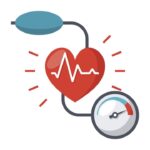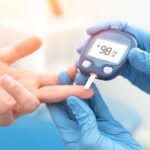Hypothyroidism can affect anyone, but it’s more common in women over 60 years old. While not an acute condition, it can severely impact a patient’s health if left undetected and untreated. So, what exactly is hypothyroidism, and how can you recognize and treat it? Let Thu Cuc TCI provide answers to your questions.
1. Understanding Hypothyroidism
1.1 What is Hypothyroidism?
Hypothyroidism is an endocrine disorder that occurs when the thyroid gland fails to produce enough hormones to regulate the body’s metabolism, slowing down or interrupting this process. The thyroid gland, located in the front of the neck, produces two main hormones – thyroxine (T4) and triiodothyronine (T3), which control the body’s metabolic activities.
While anyone can develop underactive thyroid, it’s more prevalent in older adults. Common types of hypothyroidism include:
– Primary Hypothyroidism: characterized by a deficiency of thyroid hormones (T3 and T4) due to issues within the thyroid gland itself. Blood tests show low levels of T3 and T4 hormones and elevated thyroid-stimulating hormone (TSH) levels.
– Secondary Hypothyroidism: results from factors outside the thyroid gland, often due to inadequate production of thyrotropin-releasing hormone in the hypothalamus or insufficient release of TSH from the pituitary gland.
– Subclinical Hypothyroidism: where patients exhibit few or no symptoms of hypothyroidism but have elevated TSH levels and normal T4 levels. This condition is often seen in individuals with a history of Hashimoto’s thyroiditis, and it’s more prevalent in females.
1.2 Symptoms of Hypothyroidism

Hypothyroidism is also known as underactive thyroid disease
In adults, underactive thyroid primarily manifests as fatigue and weight gain. As metabolic processes slow down, additional symptoms may include severe fatigue, muscle weakness, joint pain, constipation, dry skin and hair, sensitivity to cold, menstrual irregularities, slow heart rate, cognitive decline, and depression.
Similarly, hypothyroidism in children and adolescents may present with symptoms such as delayed growth, short stature, delayed tooth eruption, delayed puberty, difficulty concentrating, and poor intellectual development.
Infants are also at risk of congenital hypothyroidism, characterized by symptoms like excessive sleepiness, jaundice, poor feeding, constipation, poor growth, dry skin, hoarse cry, umbilical hernia, and delayed reflexes. Untreated, this condition can significantly impair both physical and mental development.
2. Is Hypothyroidism Dangerous?
Untreated underactive thyroid can lead to severe complications, even life-threatening situations, including:
– Development of a large goiter in the neck, causing compression of nearby organs, leading to difficulty swallowing and breathing.
– Increased risk of cardiovascular diseases, particularly heart failure.
– Peripheral nerve damage, resulting in symptoms like tingling, numbness, and shooting pains in the arms and legs.
– Menstrual irregularities, infertility, and miscarriages.
– Congenital abnormalities in infants born to mothers with hypothyroidism. Without prompt intervention, these children may face serious physical and mental health issues.
– Myxedema coma, a dangerous complication of hypothyroidism requiring immediate medical attention. Symptoms include coma, hypothermia (body temperature as low as 24-33 degrees Celsius), unconsciousness, seizures, respiratory failure, and potential death.
3. Diagnosis
Hypothyroidism shares clinical symptoms with many other disorders. Therefore, accurate diagnosis typically involves several tests, including thyroid-stimulating hormone (TSH) and thyroid hormone (T3, T4) measurements.
High TSH levels and low T4 levels indicate hypothyroidism. TSH levels are also monitored over time to assess thyroid function.
Results may be affected by medications and supplements, so patients should inform their doctors of any ongoing treatments before testing.

Thyroid function tests
4. Underactive Thyroid Treatment
The primary treatment for hypothyroidism involves hormone replacement therapy using levothyroxine. This oral medication boosts thyroid hormone levels in the blood, alleviating hypothyroid symptoms.
Dosage adjustments are made based on patient response and TSH levels. Regular monitoring is essential to maintain stable thyroid hormone levels.
Patients may experience side effects from overmedication, such as fatigue, rapid heartbeat, tremors, insomnia, and restless sleep. Compliance with prescribed dosages is crucial to optimize treatment outcomes and avoid adverse effects.

Examination and treatment of underactive thyroid at Thu Cuc TCI
5. Prevention Methods
To prevent underactive thyroid, individuals are advised to incorporate iodine-rich foods into their daily diet, such as seafood, seaweed, eggs, milk, and organic meats.
Self-medication for goiter should be avoided. Anyone suspecting thyroid hormone deficiency should seek prompt evaluation from reputable healthcare facilities to ensure timely and effective management and prevent serious complications.
Additionally, patients can consult an endocrinologist for guidance on dietary interventions to support thyroid health and overall well-being.
We hope this article has shed some light on hypothyroidism. Given its symptoms can mimic other conditions, patients should not self-diagnose and should instead seek early evaluation from reputable healthcare providers to avoid severe complications.








